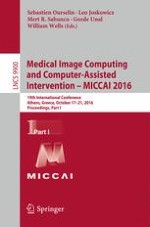2016 | OriginalPaper | Buchkapitel
Reveal Consistent Spatial-Temporal Patterns from Dynamic Functional Connectivity for Autism Spectrum Disorder Identification
verfasst von : Yingying Zhu, Xiaofeng Zhu, Han Zhang, Wei Gao, Dinggang Shen, Guorong Wu
Erschienen in: Medical Image Computing and Computer-Assisted Intervention – MICCAI 2016
Aktivieren Sie unsere intelligente Suche, um passende Fachinhalte oder Patente zu finden.
Wählen Sie Textabschnitte aus um mit Künstlicher Intelligenz passenden Patente zu finden. powered by
Markieren Sie Textabschnitte, um KI-gestützt weitere passende Inhalte zu finden. powered by
